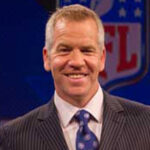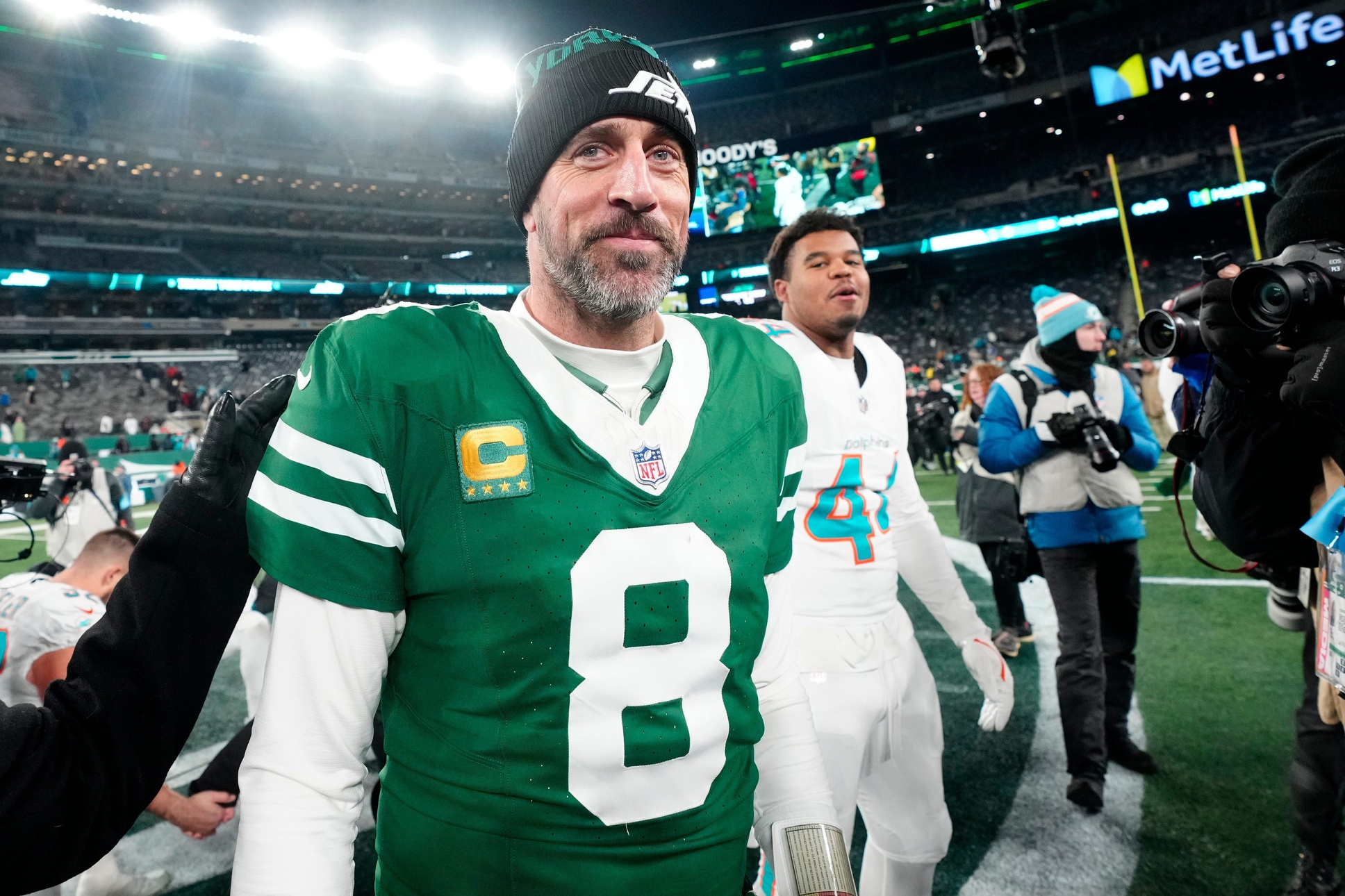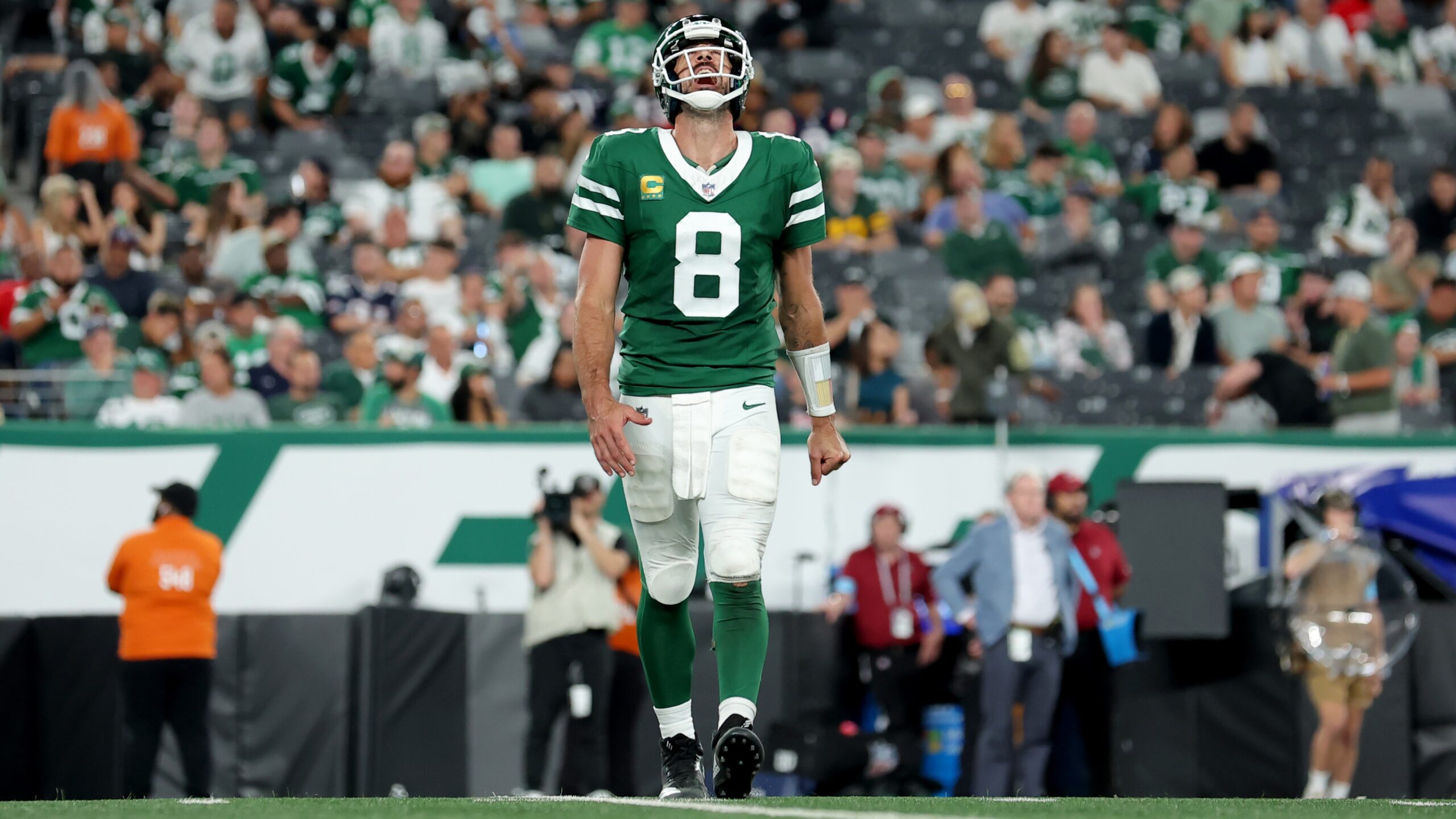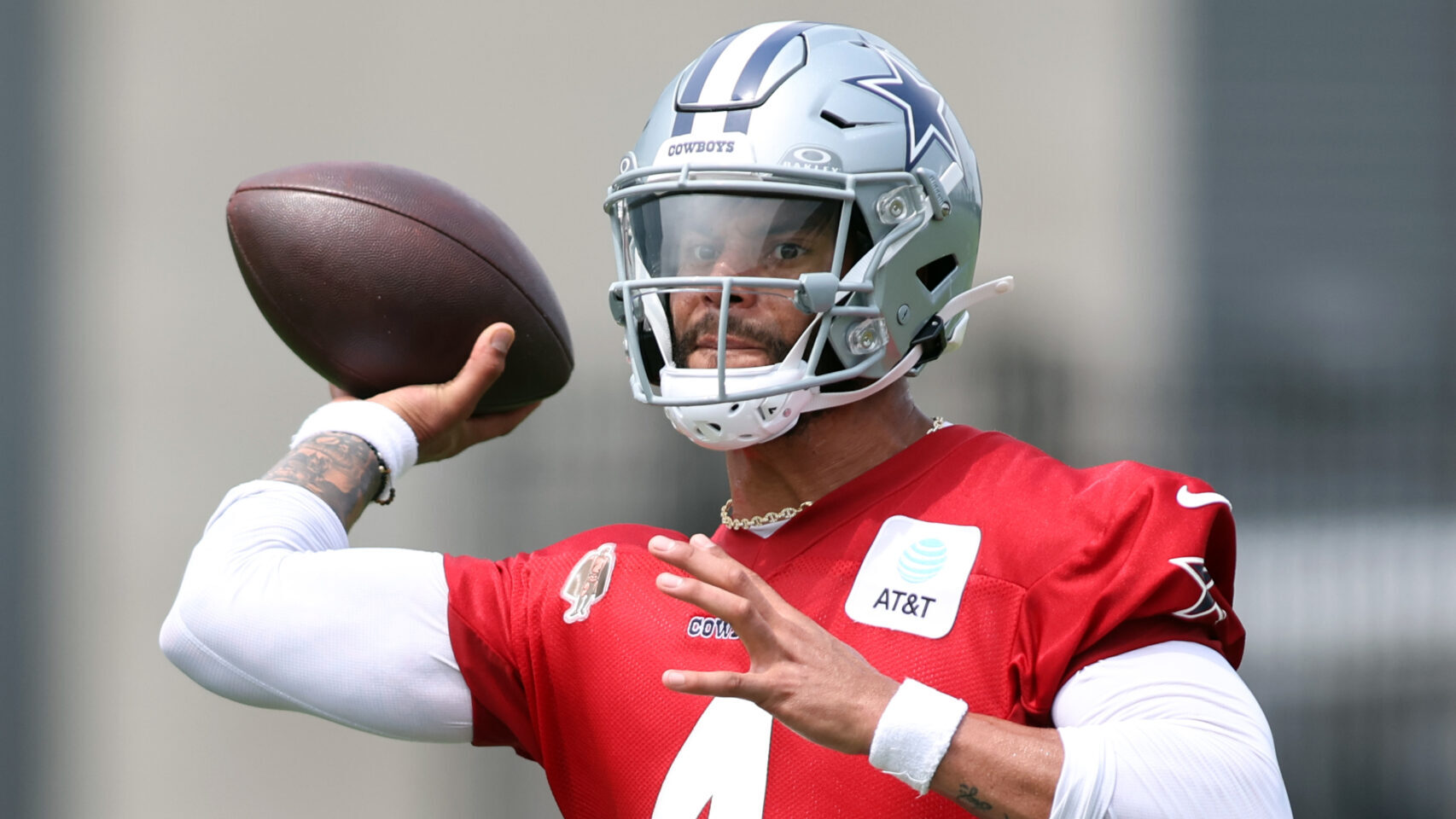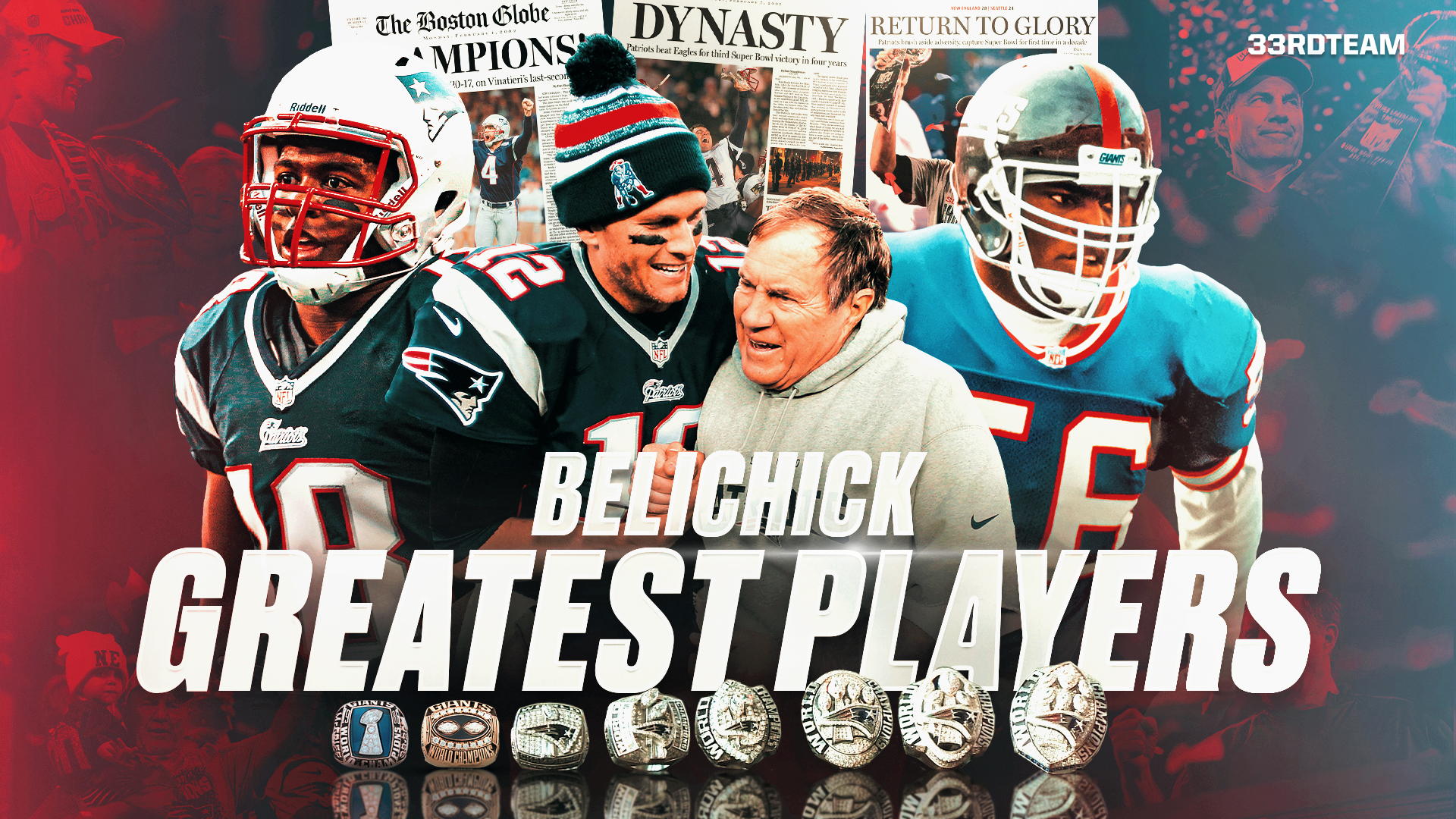Analysis
10/13/22
11 min read
Pre-Snap Read: Jury Still Out on Daniel Jones, but Verdict Will Come Soon
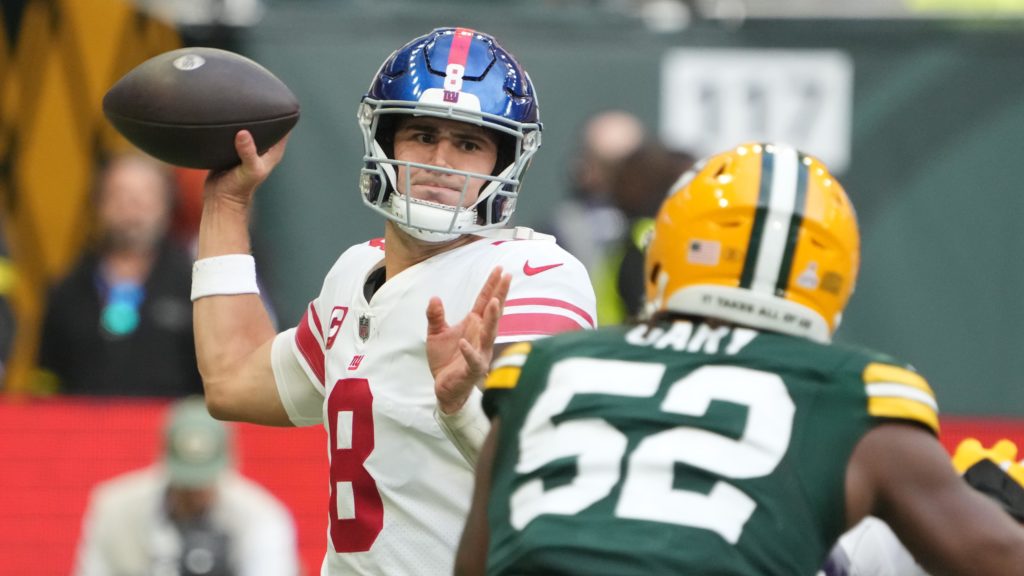
When I started working at NFL Network in 2004, I would often get asked which was my favorite team.
Growing up in a state (Iowa) with no NFL franchise, I had no allegiance to one team or another. The only rooting interest I had on Sundays in the fall was for "Meet The Press" to hurry up and end already – so the best part of my week could start: NFL kickoff at noon.
Moves to the East Coast, to the West Coast and back to the East Coast haven't changed my Sunday feelings. I don't live and die with any one team's performance; I just enjoy watching as much of it as I can.
Now as a Connecticut resident, and surrounded by high levels of New York Giants support, I find myself with a gift of sorts that's rare in this area: The ability to evaluate Daniel Jones with no emotion.
From the time the Giants boldly – and somewhat surprisingly – selected him sixth overall in the 2019 NFL Draft until now, I've seen overreaction to the many struggles he and the Giants have experienced the last three-plus seasons. It's part of fandom that plays out in every NFL city, maybe just a little louder in the biggest market. You know, quarterback gets drafted high, team loses more than it wins with that quarterback, fan base wants a new one. It all makes sense.
I wondered all along if Jones really was as bad as the record would indicate. With the team he had around him, it was hard to tell if he was the main problem, or potentially a big part of the solution.
So now his Giants are one of the feel-good stories of the young season, demanding attention and respect at 4-1. Brian Daboll has them playing an overachieving and gritty style that's hard not to like. Saquon Barkley is playing like an MVP. And Daniel Jones is … well, how would you finish the sentence?
A liability or an asset? Underrated or just plain limited? And are the Giants winning because of him or in spite of him?
I see Jones as one of the best conversation topics in the NFL. We already knew he was entering a high-profile, prove-it season, and now I'm intrigued with how he and coach Brian Daboll have won four out of five games with a limited offense. So I dove into Jones' most recent win, over Green Bay in London, and New York's one loss to Dallas, to refine my own answer on what Daniel Jones is — three seasons and five games into his Giants career.
[bc_video video_id="6313170401112" account_id="6312875271001" player_id="default" embed="in-page" padding_top="56%" autoplay="" min_width="0px" playsinline="playsinline" picture_in_picture="" language_detection="" max_width="640px" mute="" width="100%" height="100%" aspect_ratio="16:9" sizing="responsive" ]
Win vs. Packers
The Giants' first successful passing play Sunday against Green Bay didn't come until late in the first quarter when they were already down 10-0. But it's a good example of what Daboll and Jones are doing well together.
On first-and-10, Jones took the snap from under center, faked a wide-reach handoff to the left, turned his back and set up 10 yards behind the line of scrimmage. After a big step up toward the line of scrimmage, he hit Darius Slayton in stride 15 yards downfield on a crossing route. It became a 25-yard gain.
Lots to read into this one play.
I love Daboll's first-down mindset for two reasons: 1.) He puts Jones under center instead of in shotgun, and 2.) lines up the NFC's leading rusher behind him. Simple and basic, yes, but also smart and useful. The threat of a running play is much more real to a defense when the quarterback is actually under center, and the challenge of tackling Saquon Barkley is real to any defense, especially on early downs. Leveraging both of those realities with a first-down play-action pass is an excellent choice, and it's the basis of what the Giants do.
Daboll routinely has Jones drop 8-10 yards behind the line of scrimmage after some type of play fake to Barkley. I love it. First, Jones innately and aggressively steps up when he hits the top of his drop. It's a natural part of his game that wouldn't play as well on a short drop. When he starts the big shuffle up from 8-10 yards deep, he's setting up in what should be the safest part of the pocket.
[bc_video video_id="6313534321112" account_id="6312875271001" player_id="default" embed="in-page" padding_top="56%" autoplay="" min_width="0px" playsinline="playsinline" picture_in_picture="" language_detection="" max_width="640px" mute="" width="100%" height="100%" aspect_ratio="16:9" sizing="responsive" ]
I have to think the deep drops are also a subtle nod to the fact that his offensive tackles haven't been protecting that well. When a defensive end is rushing to a point 10 yards behind the line of scrimmage — if the quarterback is good at stepping up — even when he beats the tackle, he can often rush right past the QB and find himself out of the play. The entire concept works on a number of levels for this offense.
Jones' movement skills go beyond those natural instincts to step up in the pocket. Daboll calls upon them in a variety of ways, and they've been a major part of the Giants winning all but one of their games.
Consider all the ways New York moved the chains in the second half Sunday, while chipping away at Green Bay's double-digit lead.
After a wide play-action fake to the left, Jones set up deep behind the right guard, then hit a crossing route for a first down. He once rolled left, set up outside the tackle box, and threw back over the middle to a tight end.
A quarterback draw worked for a first down, Jones scrambled for another. Three times, with three separate backfield fakes, Jones rolled right and found open receivers on the run.
Demanding a wide range of quarterback movement is part of Daboll's play-calling DNA, and it's meshing well with Jones' talent.
Remember how often Daboll called upon Josh Allen's athleticism in Buffalo? Allen thrived as a supplement to the Bills' run game, and now Jones is moving down a similar path. He wasn't afraid to run in his first three years, but he's running more than ever now, averaging eight runs per game, the highest clip of his career. Considering that Allen averaged seven runs per game last year in Buffalo (a number that increased in the postseason) with Daboll calling the plays, it's no coincidence Jones is running more often than before.
Daboll also gives Jones a good amount of launch-point diversity in and out of the pocket, which is also beneficial to his underwhelming offensive line. Jones is just as likely to set up behind the center as he is behind either one of the guards or tackles, and it's not uncommon to see him rolling to his right or left. Without Jones' ability to convert throws while moving either direction, and move the chains as a runner, the Giants don't erase Green Bay's double-digit second half-lead and don't move to 4-1.
[bc_video video_id="6313529016112" account_id="6312875271001" player_id="default" embed="in-page" padding_top="56%" autoplay="" min_width="0px" playsinline="playsinline" picture_in_picture="" language_detection="" max_width="640px" mute="" width="100%" height="100%" aspect_ratio="16:9" sizing="responsive" ]
Some Concerning Trends
I was open to seeing the good with the Daboll-Jones offense, but I wasn't blind to the bad. Once a team gets to five games, the numbers start to tell an accurate story, and many such numbers associated with the Giants' passing game are concerning.
To start with, they're second-to-last in passing offense; only the Bears have thrown for fewer yards through five games. Another way of looking at it: Sunday was Jones' first game of the season with more than 200 yards passing. That's just not a sustainable way to win.
Then there's Jones' yards per attempt, which I see as an excellent way to measure passing game effectiveness. It's alarmingly low: 6.4. That puts him in the company of Davis Mills, Mitch Trubisky and Kyler Murray, and is the lowest for any starting quarterback on a winning team.
When you have Barkley, and the bread and butter of your passing game is the short-to-intermediate crossing routes, the winning formula isn't reliant upon the big play. But the ability to hit a few is still needed, and the Giants are struggling to do so. They are currently last in explosive passing plays (20-plus yards).
Loss to Cowboys
The numbers reflect the entire offense, and reflect the fact they are without some of their top pass-catchers, but here's what concerns me about Jones individually: He has a tendency to throw a late, heavy, inaccurate ball on the shorter routes the Giants depend upon. Two examples from the Cowboys game in Week 3:
1. In the final 30 seconds of the first half, needing one more completion to get into field goal range, he missed an open, quick slant to Kenny Golladay. The ball was a tad late, thrown a little too hard, and well behind his target. The three points that could have followed a completion there would have made a big difference in a one-score game.
[bc_video video_id="6312768715112" account_id="6312875271001" player_id="default" embed="in-page" padding_top="56%" autoplay="" min_width="0px" playsinline="playsinline" picture_in_picture="" language_detection="" max_width="640px" mute="" width="100%" height="100%" aspect_ratio="16:9" sizing="responsive" ]
2. Then, tied at 13 early in the fourth quarter, Daboll dialed up a perfect call on a third-and-6. With trips to the left, all three receivers ran deep, clearing out a space for Sterling Shepard, lined up to Jones' right, to run a short under route into the vacated space. It was the man coverage Daboll wanted, and Shepard had a step on his defender. Jones just plain missed him, throwing a bit too high, hard, and behind him. It's a throw he should hit nine times out of 10, if not every time.
I should point out that Jones' completion percentage right now is higher than it's ever been (67%), and his interception rate is lower than ever. This is progress that shouldn't be overlooked.
And the Giants' third-down success has taken a major turn in the right direction the last two weeks, with a conversion rate (48%) more than double what it was in their first three games. Jones gets high marks there.
But evaluating Jones and the Giants in comparison to the NFL's upper echelon passing attacks is the harsh reality here. Too many times he doesn't make it easy enough on his receivers on the many types of in-cutting, short-to-intermediate routes Daboll depends on, thus denying the clean catch-and-run opportunities this offense needs.
An Incomplete Verdict
So, as the Giants look to track down their first winning season since 2016, is Daniel Jones an asset or liability? He has without a doubt been an asset through five games. Big Blue isn't 4-1 without him.
I admire his toughness and I appreciate his steady way. His movement skills make him versatile within the pocket and effective outside of it, and they play well with how Brian Daboll likes to design a pass offense and call a game.
The Giants are in the midst of turning the corner from angst and disappointment to hope and positivity. But for them to stay on that path, Jones has to find more success with the downfield passing game. If — when his top targets return — he can get them the ball a hair quicker and a tad more accurately, the Giants' pleasant surprise of a start will lead to significant games after Thanksgiving.
And that stretch will provide the best answer to who Jones is at this point of his career.
WATCH MORE: Brian Daboll Setting Giants up for Success
[bc_video video_id="6312797212112" account_id="6312875271001" player_id="default" embed="in-page" padding_top="56%" autoplay="" min_width="0px" playsinline="playsinline" picture_in_picture="" language_detection="" max_width="640px" mute="" width="100%" height="100%" aspect_ratio="16:9" sizing="responsive" ]
